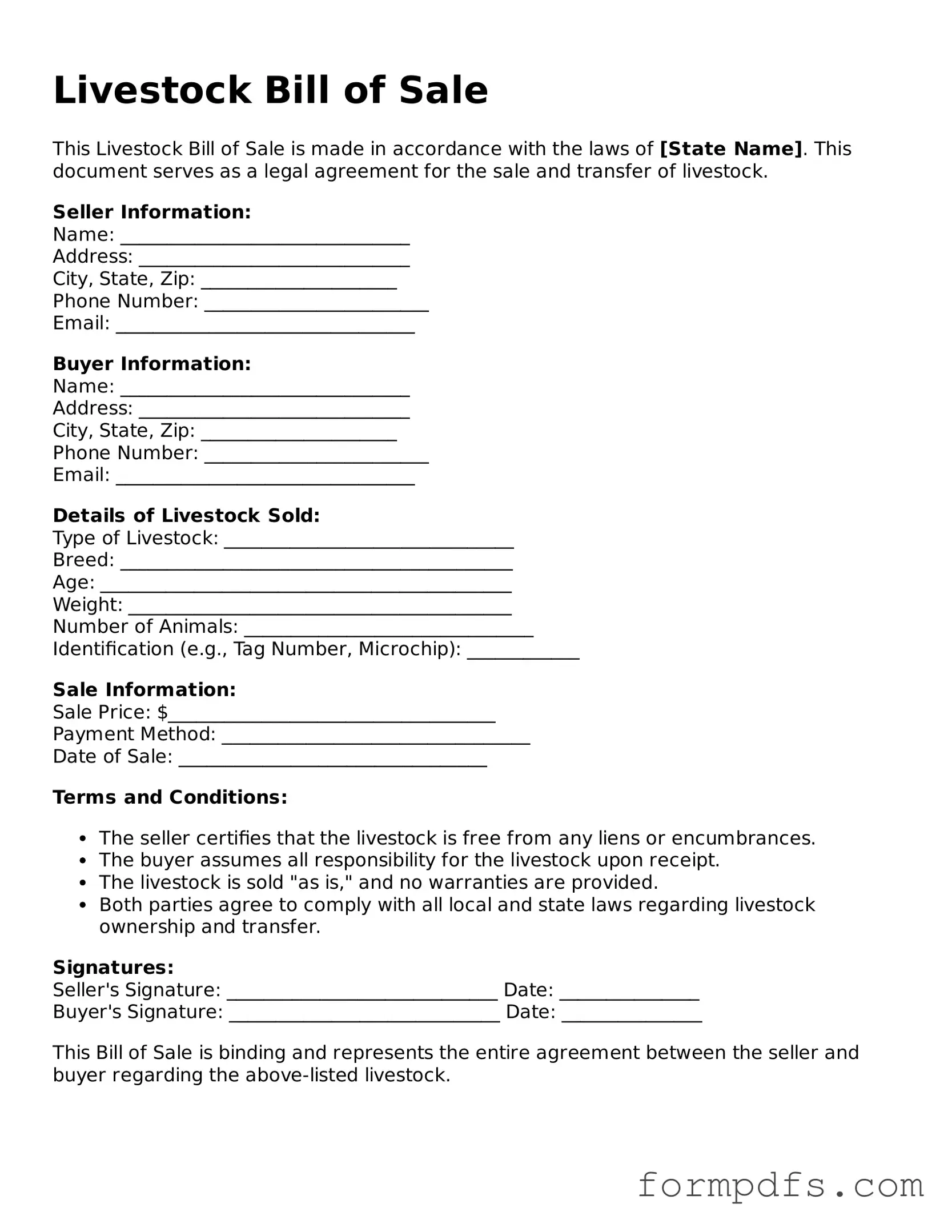What is a Livestock Bill of Sale form?
A Livestock Bill of Sale form is a legal document that records the transfer of ownership of livestock from one party to another. This form typically includes details such as the seller's and buyer's information, a description of the livestock being sold, and the sale price. It serves as proof of the transaction and can be important for both parties for record-keeping and legal purposes.
Why is it important to use a Livestock Bill of Sale form?
Using a Livestock Bill of Sale form is crucial for several reasons. First, it provides a clear record of the transaction, which can help prevent disputes between the buyer and seller. Additionally, it may be required for certain legal or financial processes, such as registering the livestock with local authorities or securing financing. This form also protects the rights of both parties by documenting the terms of the sale.
What information should be included in the form?
A comprehensive Livestock Bill of Sale form should include the following information: the names and addresses of both the seller and the buyer, a detailed description of the livestock (including breed, age, and identification numbers), the sale price, and the date of the transaction. It may also include any warranties or guarantees provided by the seller regarding the health or quality of the livestock. Signatures from both parties are essential to validate the agreement.
Is a Livestock Bill of Sale form required by law?
While a Livestock Bill of Sale form is not universally required by law, it is highly recommended for any livestock transaction. Certain states may have specific regulations regarding the sale of livestock, and using this form can help ensure compliance with those regulations. Additionally, having a written record can protect both the buyer and seller in case of any future disputes.
Can I create my own Livestock Bill of Sale form?
Yes, you can create your own Livestock Bill of Sale form. However, it is important to ensure that it includes all necessary information and complies with any applicable state laws. Many templates are available online that can guide you in drafting a comprehensive and legally sound document. If you are unsure, consulting with a legal professional can help ensure that your form meets all requirements.
